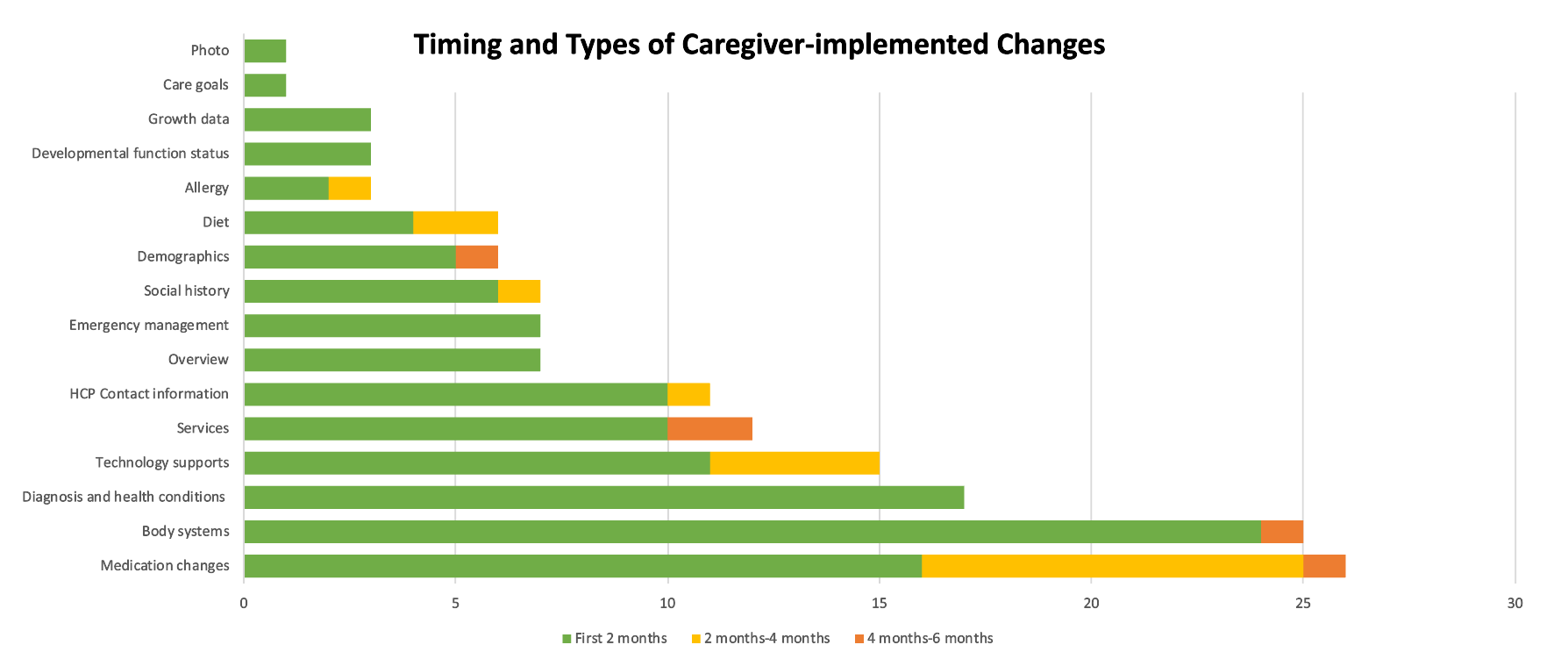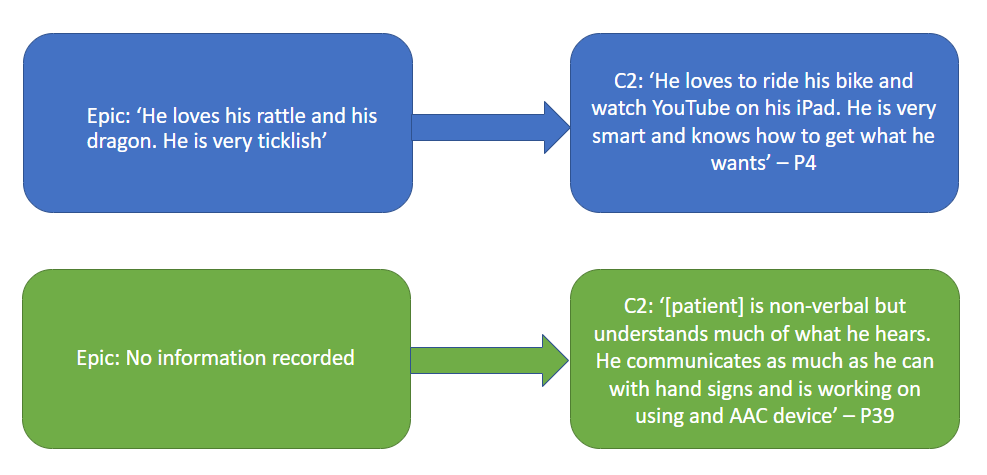Technology
Session: Technology 1
172 - Online, Collaborative Care Plans for Children with Medical Complexity: A Quantitative Review of the Feasibility and Acceptability of Caregiver-Implemented Changes
Sunday, May 5, 2024
3:30 PM - 6:00 PM ET
Poster Number: 172
Publication Number: 172.1763
Publication Number: 172.1763
- CO
Ciobha O Kelly, MB BCh BaO, MEd (she/her/hers)
Resident
University of Toronto Temerty Faculty of Medicine
toronto, Ontario, Canada
Presenting Author(s)
Background: Care plans are a part of standardized care for children with medical complexity (CMC) and provide a summary of a child’s medical history and care needs. Healthcare professionals (HCP) predominantly edit care plans, limiting shared ownership and partnership with caregivers. Care plans are typically updated during clinic visits and admissions, resulting in a document that is not updated in real-time. Allowing caregivers the opportunity to contribute to care plan development has been shown to strengthen caregiver-provider relationships and improve health outcomes. Online, collaborative care plans that allow caregivers to implement changes in real-time may be an effective tool to increase the accuracy and accessibility of their child’s health information
Objective: To assess the feasibility and acceptability of online, collaborative care plans, and evaluate the frequency and types of caregiver-implemented changes
Design/Methods: Caregivers of CMC were recruited from a tertiary complex care program to use an online, patient-facing platform (C2) for 6 months, which included the ability to edit their child’s care plan. The C2 care plan was compared with patient’s electronic medical record (EMR) care plan to assess for differences. Caregivers completed a survey and qualitative interviews to share their perspectives. The frequency, timing, and types of changes made were analyzed using descriptive statistics and compared with qualitative data
Results: Thirty-six caregivers registered on C2 and 27 (75%) made at least one change to the online care plan. Caregivers made 149 changes (range 1-26 per caregiver), with the most frequently edited section being medications (17.4%). 84% of changes were made in the first two months. Caregivers who made fewer changes expressed more discomfort with care plan editing. Changes made by caregivers often differed from HCP edits, for example re-ordering diagnosis lists and adding reasons for medication use. Most changes by caregivers included either new or more up-to-date information than the EMR care plan. Most caregivers (69%) reported that online care plan access was helpful, and 53% found editing the care plan helpful
Conclusion(s): Caregivers made clinically relevant changes and appreciated being able to access and edit their child’s care plan, suggesting that online, collaborative care plans are feasible and beneficial. Caregivers and HCPs made different types of changes indicating a potential synergistic benefit to care plan collaboration. Some caregivers expressed editing discomfort, highlighting the need to explore a collaborative review process on future care plan models


